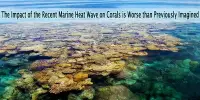For hints about how Earth’s landscapes might change in response to a changing climate and for understanding into the migrations of human societies over time, scientists frequently turn to the past. A recent study provides both by reconstructing prehistoric temperatures for some of the earliest known communities in North America for the first time.
The study, published in Quaternary Science Reviews, uses new techniques to examine the past climate of Alaska’s Tanana Valley. Researchers now get a view into the climate that supported humans living at some of the continent’s oldest archaeological sites, where mammoth bones are preserved alongside signs of human settlement, thanks to a temperature record that dates back 14,000 years.
Scientists can better comprehend the significance of the region for human migration into the Americas by reconstructing the previous environment.
“When you think about what was happening in the Last Glacial Maximum, all these regions on Earth were super cold, with massive ice sheets, but this area was never fully glaciated,” says Jennifer Kielhofer, Ph.D., a paleoclimatologist at DRI and lead author of the study. “We’re hypothesizing that if this area was comparatively warm, maybe that would have been an attractive reason to come there and settle.”
The region wasn’t really responding to these global scale climate changes as we might expect. Because temperatures are really stable through this record, we can’t necessarily use temperature as a way to explain changes in human occupation or adaptation through time, as scientists have previously tried to do.
Jennifer Kielhofer
As a doctorate student at the University of Arizona, Kielhofer conducted the study there. She was drawn to Alaska because of the state’s concentration of research talent. She also saw a chance to further scientific knowledge in a region of the world that is particularly vulnerable to climate change.
“We have to look to the past to try to better constrain how these areas have responded previously,” she said, “and how they might respond in the future under climate scenarios that we predict.”
Earlier studies had used changes in flora and pollen to create rough temperature records. This data, however, can only give a broad impression of whether a place has been warming or cooling over time.
To obtain a more precise history of temperatures, Kielhofer examined soil samples from archeological sites. She studied temperature data preserved in bacteria using a method called brGDGT paleothermometry to establish a record of the mean yearly air temperature above freezing with a precision of roughly 2.8 degrees Celsius.
“Bacteria are everywhere,” she said. “That’s great because in areas where you might not have other means of recording or assessing past temperature, you have bacteria. They can preserve for millions of years, so it’s a great opportunity to look at pretty much anywhere on Earth.”
She claimed that the findings were unexpected because many scientists had previously thought that the area’s extreme temperature variations may have contributed to early humans’ migration. But Kielhofer’s data showed that temperatures in the Tanana Valley remained fairly stable over time.
“The region wasn’t really responding to these global scale climate changes as we might expect,” she said. “Because temperatures are really stable through this record, we can’t necessarily use temperature as a way to explain changes in human occupation or adaptation through time, as scientists have previously tried to do.”
Now, Kielhofer is focusing on other historical documents, such as shifts in aridity, that can clarify how the environment in this area affected early human groups.
















